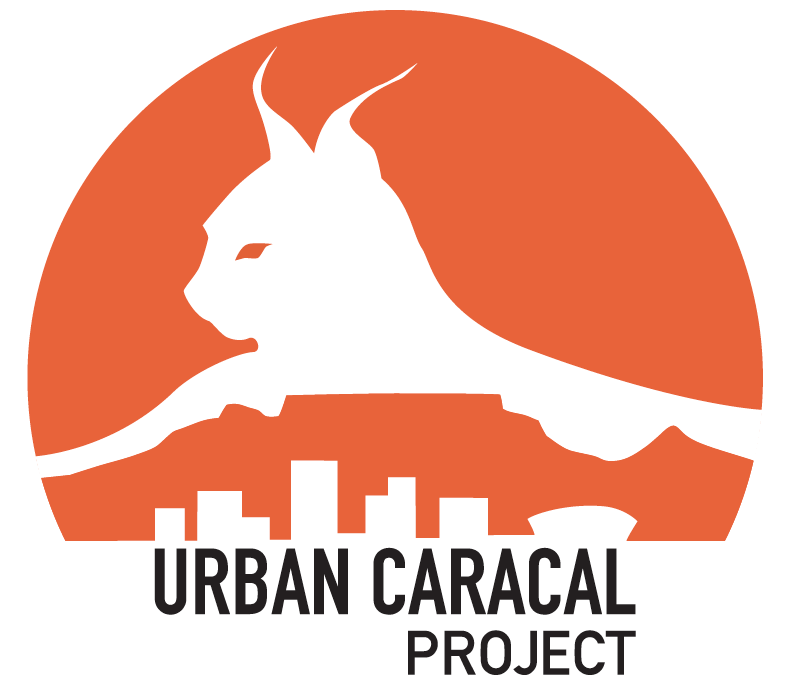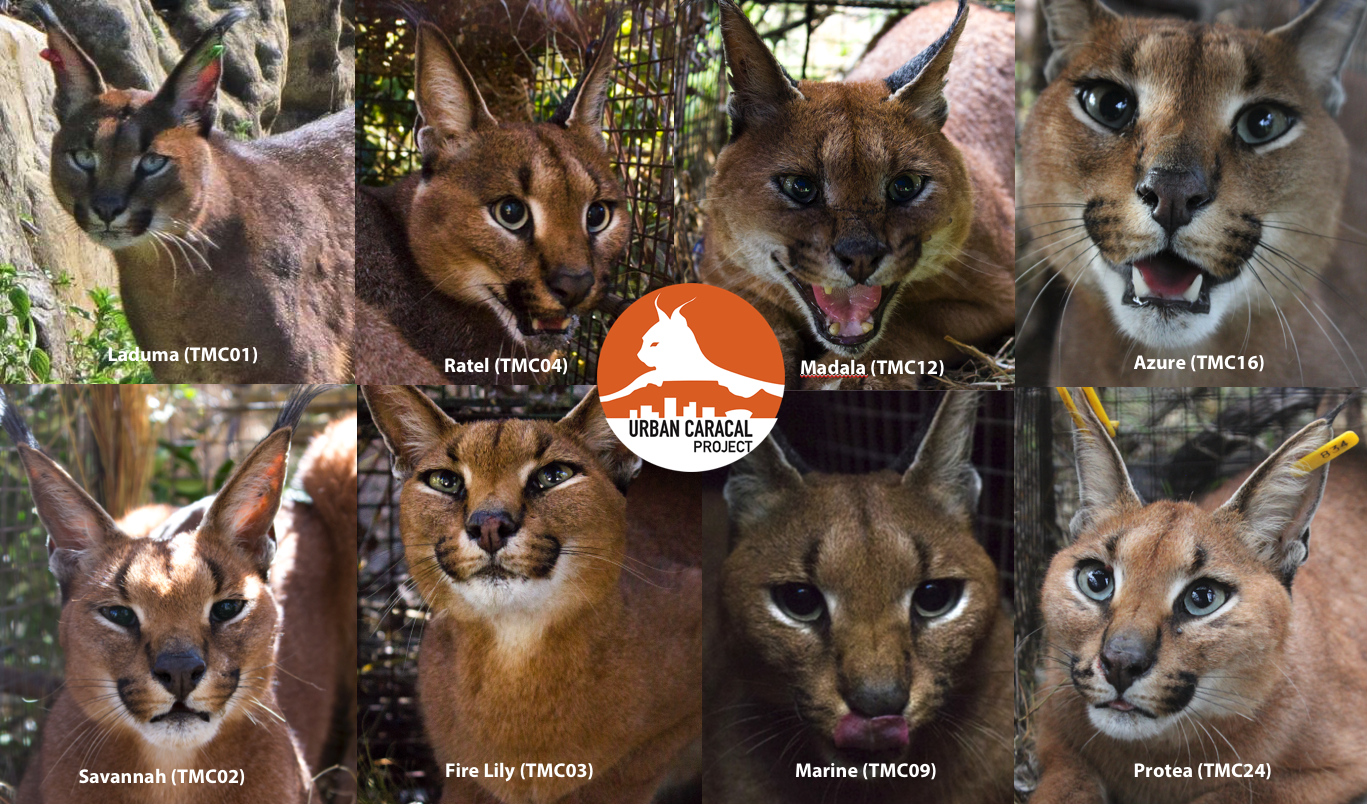Update on what's up with the project: being a caracal biologist isn't always fun in the sun!
post by Laurel Serieys, PhD
Being a caracal biologist isn't always fun in the outdoors following cats! Being a biologist really means that as data are collected, we must shift our roles from field biologist to lab or computer biologist! It's been a while since we've updated what's happening on the project, so I thought I'd share our progress with an overview of what we've done and what we are doing!
Beginning in November 2014, we set out to capture and radio-collar caracals in the Cape Peninsula. Our goal: to understand how consequences of urbanization in the peninsula affect wildlife populations. We wanted to know directly from the "natives" what their lives are like. Caracals are a great study species to study how humans impact wildlife. In the peninsula, they have ascended to the role of apex predators. They are vulnerable to the effects of pesticides that bioaccumulate in the ecosystem. Interestingly, they are also vulnerable to diseases carried by domestic animals like cats and dogs. Those diseases can have huge impacts on wild predators. This is one reason it is good to clean up after your dogs when you walk them in green areas, and why roaming cats can be harmful to our natural areas! Finally, caracals require a lot of space to find enough food and mates. They can therefore tell us whether habitat is sufficiently connected and how they deal with infrastructure like roads.
We hoped to catch 10 caracals when we started. But soon, it was evident we would need more than 10 collared caracals. We noticed how different the movements were between males and females, and the young and the older caracals. With the amount of variation in the movements between the different collared caracals, we wanted to track at least 20 across the peninsula.
So from November 2014 to August 2016, we worked hard to collar at least 20 caracals. Several individuals died soon after collaring them from disease, pesticide exposure, or being hit by cars (unrelated to the radio-collars). In fact, the mortality rate for these caracals was alarmingly high. We'd hoped to get at least 3 months of tracking data from each caracal, but some died within weeks of being radio-collared. To accomplish our goals, we actually ended up tagging 31 caracals, and radio-collaring 28 individuals, 26 of which live in the Cape Peninsula!
Meanwhile we were also tracking the already collared caracals to collect data on their diet. We were on the ground nearly every day tracking the caracals and going to the places they visited (after they already left the area) to track their lives in near real-time. We were able to study what prey they eat by finding actual prey remains in the places they visited, and also by collecting their feces and dissecting the feces in the lab to see what bones and hair pass through the caracal digestive tract! See our PhD student's (Gabriella Leighton) blog for more details on the diet work!
As 2016 started to wrap up, we needed to make sure that all collars were removed from the caracals. The batteries on the collars only lasted for 4-6 months, and we wanted to make sure no caracals were left with the collars on them for the rest of their lives. We used collars that have an interactive feature that enabled us to command (using a computer and specialized antenna) and activate a spring-loaded release so the collar would fall off of the animal. Some of the biggest adventures we undertook were when we were trying to get close enough (within several hundred meters) to send the "drop" signal!
In mid-2017, we are entered the "less glamorous" phase of the project, which is the phase we are currently in. We have movement and diet data for 28 caracals, a lot of genetic samples from the Peninsula cats, but also all the roadkill caracals that people reported to us. We have samples for disease and pesticide testing too.
Now, the project is essentially just me and a couple students. We are using all of our time to conduct labwork, analyse data, and write publications about what we are learning. I help advise a couple of PhD students too– Gabi's work on the diet, and another student working on a new component of the genetics project. I also spend time reaching out to potential collaborators to use the samples we've collected for interesting new ways to study this population. For example, we are prepping samples to ship to Arizona State University, USA to a laboratory that specializes in novel feline diseases. This means getting permits and hours worth of just organizing samples for the trip overseas.
I have been enjoying spending nearly every day manipulating and analyzing in different ways to really get a good grasp of the biology of the caracals near urban Cape Town. Most people don't guess, but it will actually take me more than a year just to analyze the datasets and create the manuscripts for publication that will be the key step to answer the questions we started out with in 2014! Things are coming along nicely and the more I learn by working with the data, the more I love those urban caracals and have respect for their resilience and ability to persist in the Cape Peninsula. Stay tuned as we make headway and can tell you the big-picture stories we are discovering. Thanks for your continued support and interest!
Please come support us at our upcoming benefit concert! We will be selling caracal wine so bring some bucks, and if you have burning caracal questions, come say 'hi' after my presentation and ask away! Hope to see you there!


